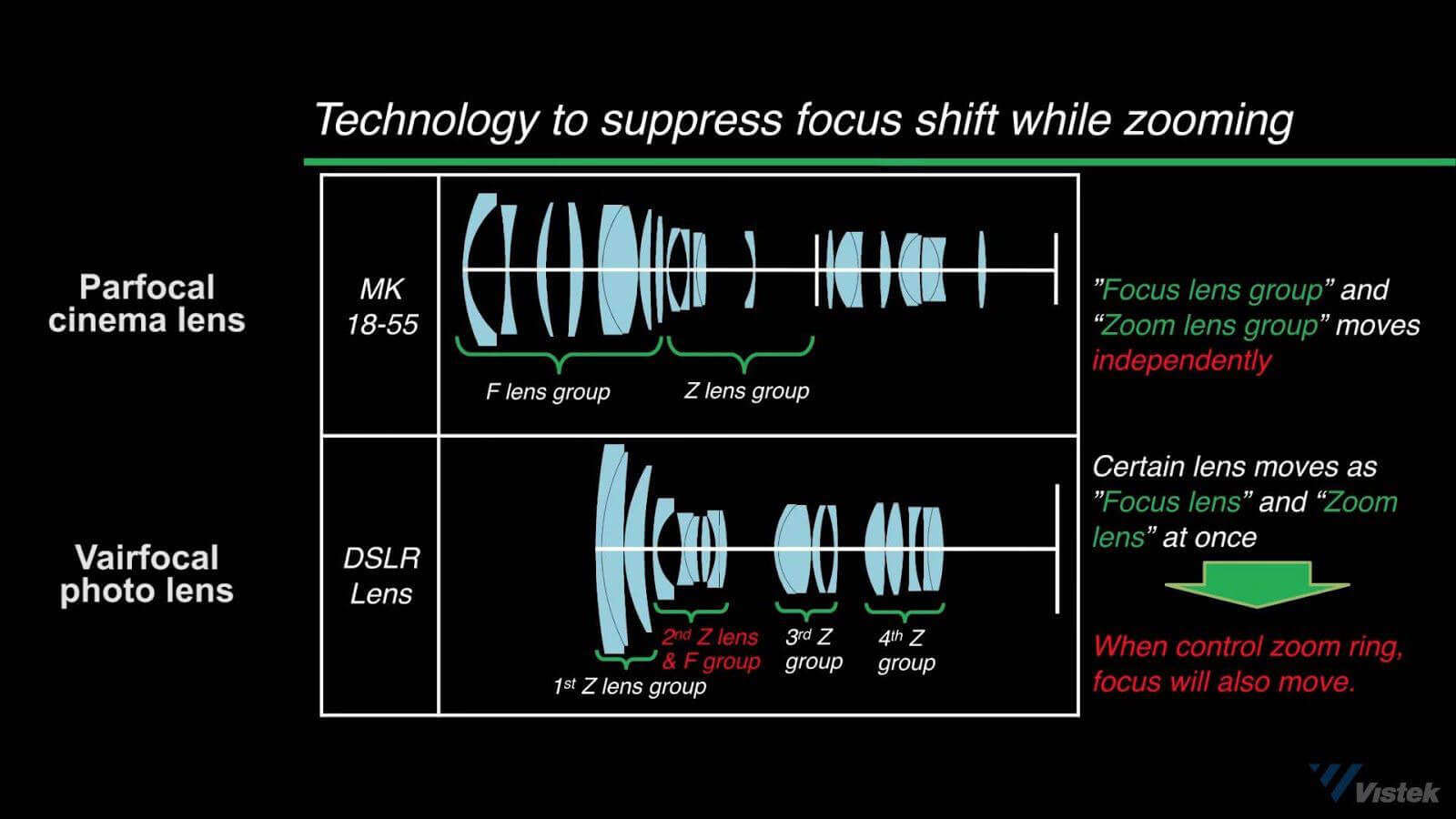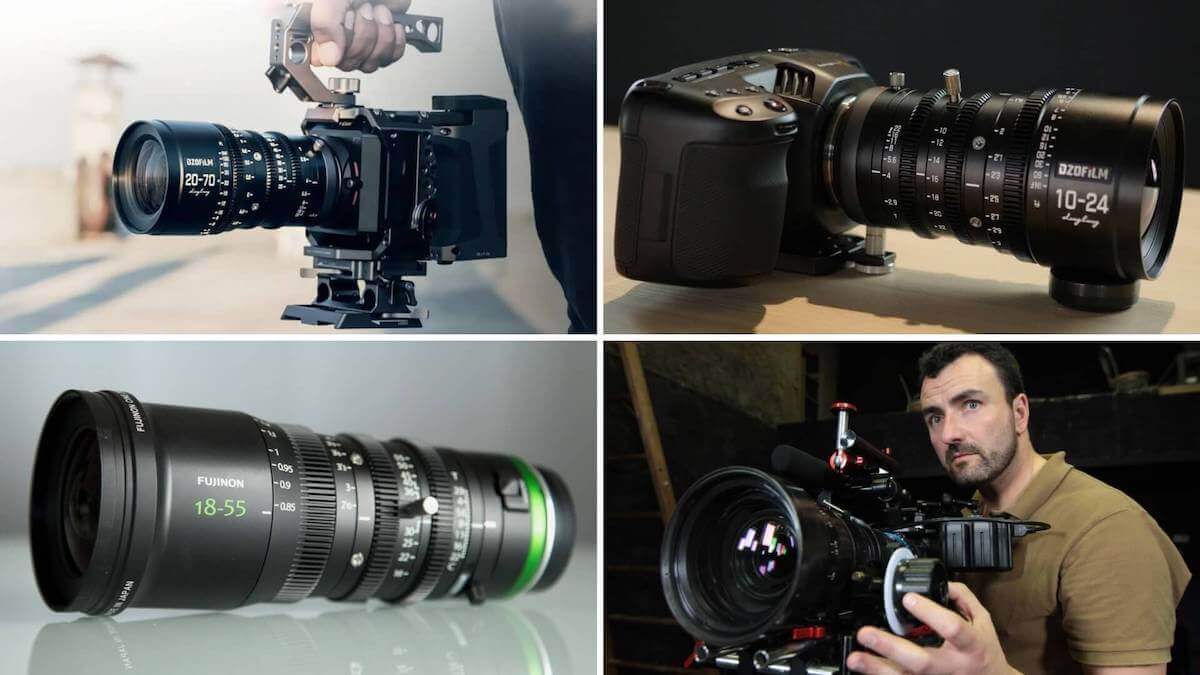If you ever looked into buying a cinema lens, you might recall your jaw dropping from the price tag. While there are various elements of a cinema lens that differ from photography lenses, there is one spec that should not be undervalued. All cinema lenses are parfocal lenses. What is a parfocal lens? Why are they so expensive? How do they differ from other lenses? We’ll answer all of these questions and more in this article.
What is a parfocal lens?
First, let’s define parfocal lens
Before we dive into the benefits of using a parfocal lens system and why they have such hefty price tags, we must first define parfocal lens fundamentally. Understanding what a parfocal lens is crucial in understanding why cinematographers use it.
PARFOCAL LENS DEFINITION
What is a parfocal lens?
A parfocal lens system is a lens that maintains its focus despite changes in the lenses focal length or magnification. This enables cinematographers to zoom in and out from a subject while maintaining the same focus.
The counterpart to the parfocal lens is the varifocal lens. Varifocal lenses change focus as the focal length also changes. This can make it incredibly difficult to capture a zoom shot while maintaining a consistent focus point.
What is a parfocal lens used for?
- Zoom shots
- Crash zooms
- Dolly zooms
What is a parfocal lens used for?
Reasons to use a parfocal lens
Many new cinematographers and filmmakers these days find themselves shooting on DSLR cameras. Many lenses beginners use are varifocal, as parfocal lenses are much more expensive. So why would you consider using a parfocal lens? Let’s first give this video a watch so that we can define parfocal lens which ties directly into the benefits of using one.
What is a Parfocal Lens?
A parfocal zoom lens has the ability to maintain focus while changing focal length makes it a critical tool for capturing zoom shots. More specifically, a parfocal zoom lens is critical to effective dolly zoom shots that not only zoom, but move the camera simultaneously.
Crash zooms, commonly found throughout Quentin Tarantino’s directing style, would also be incredibly difficult to achieve without these lenses.
Tarantino using a parfocal zoom lens
Crash zooms allow operators to focus on a subject at a lens' maximum focal length and then quickly change to a shorter focal length while keeping focus.
Long story short, if you plan on changing your focal length at all during a shot, a parfocal length will save you a lot of time and stress. It will also result in a much cleaner and better shot.
Related Posts
Parfocal lens system
Parfocal lens vs varifocal lens
What is a parfocal lens better at than other lenses? To answer this we must take a look at the counterpart to its — the varifocal lens. Unlike the parfocal camera lens, varifocal lenses change focus when the focal length of the lens changes.
This means that anytime you zoom in or out when using a varifocal length, the focus point will change.
Parfocal camera lens vs varifocal lenses
Varifocal lenses require a camera operator to zoom out while simultaneously changing focus. This can be incredibly difficult to pull off. When zooming with a varifocal lens, the shot may capture the focus breathing of the lens. This can be incredibly distracting for an audience and make a shot appear amateur.
Varifocal lenses were originally designed for still photography. Since still photography is a multi-step process, photographers could zoom in first and focus second. For this reason, the mechanisms that control the focal length and focus are one in the same.
When the focal length is adjusted, the focus is adjusted.

Parfocal camera lens vs varifocal lenses
With these lenses, on the other hand, the focus mechanism and zoom mechanism move independently from each other. This allows the focus to remain the same despite the focal length changing.
This also means that parfocal lenses are more complex to build and thus more expensive. Many DSLR cameras have implemented software such as facial recognition and focus tracking with varifocal lenses to work around this problem. However, there are still margins of error with this method.
Varifocal lenses can cause even the best cinematographers to miss focus more frequently. Shooting with these lenses can save stress and time during a production by maintaining focus points.
Related Posts
UP NEXT
Guide to buying the right lens
Thinking about buying a new camera lens? Understanding what lenses are available on the market will help you get a better idea of what lens is right for you. We’ve put together the ultimate buying guide for anyone looking to purchase a new lens. Lens specs, types, and prices all compiled into one convenient article.
Up Next: Camera lens buying guide →
Showcase your vision with elegant shot lists and storyboards.
Create robust and customizable shot lists. Upload images to make storyboards and slideshows.
